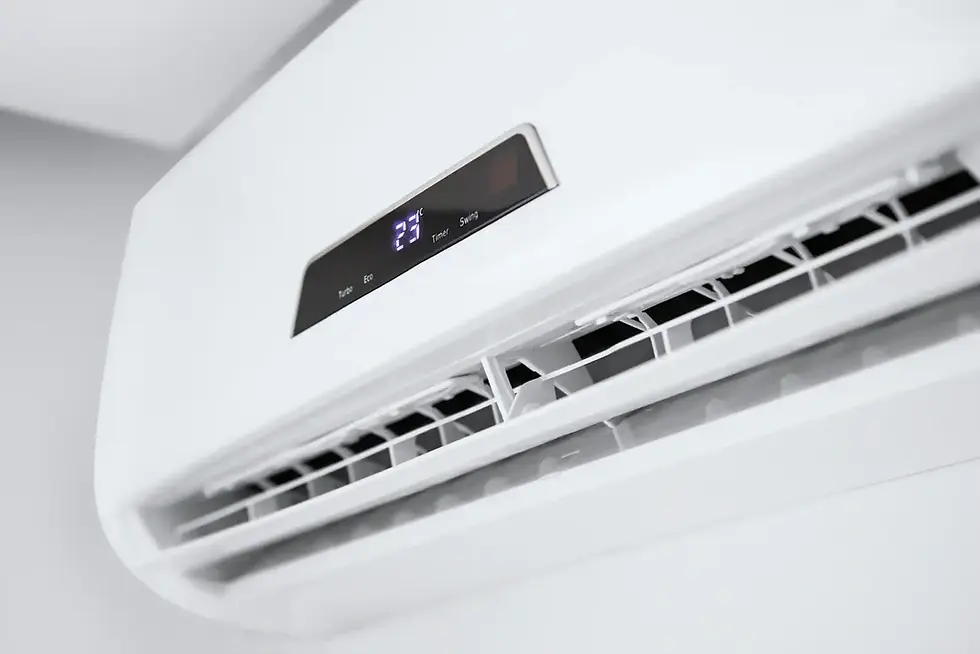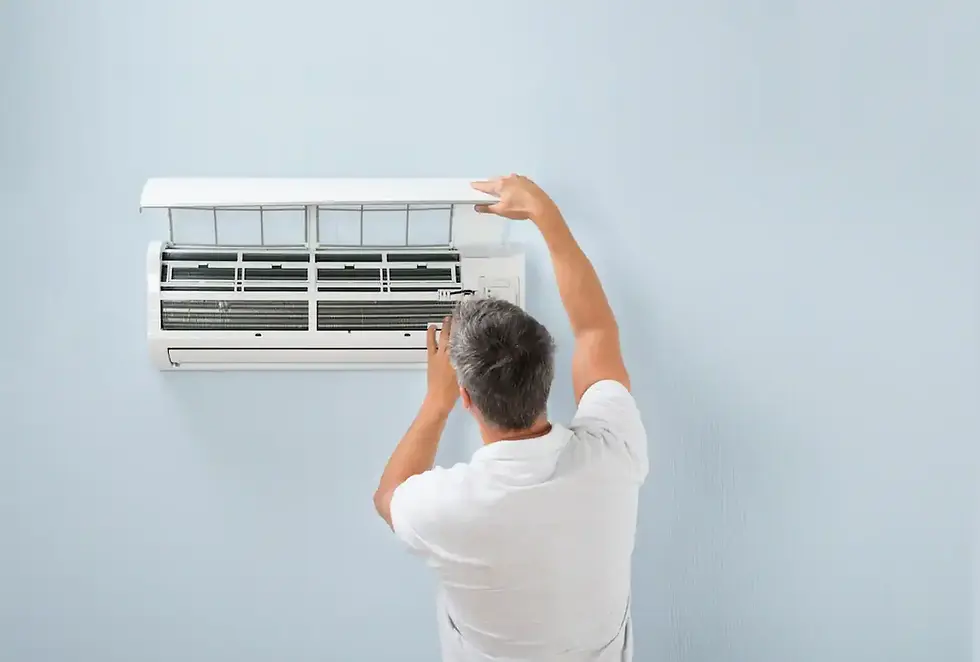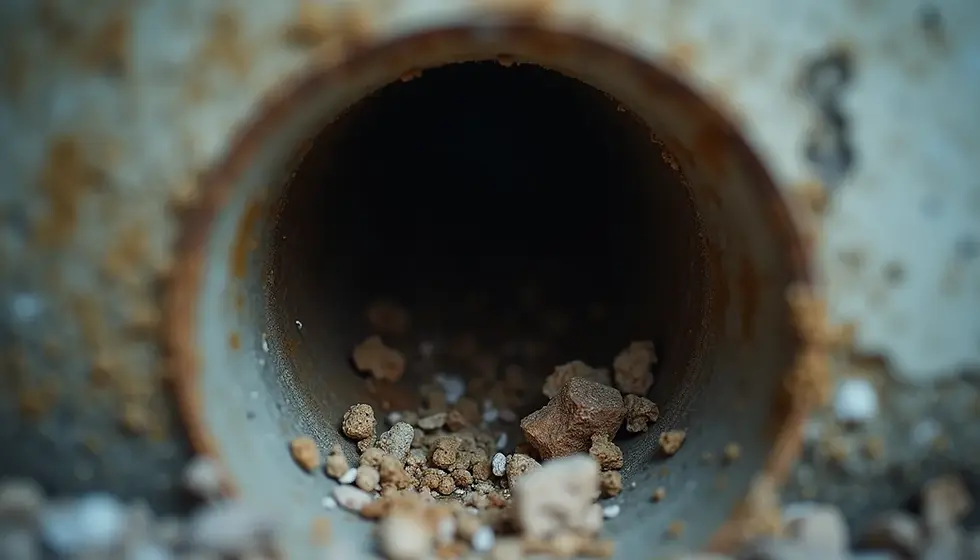AC Leaking Water: The Real Reasons, Fast Fixes, and When to Call a Pro
- Mei-Lin Arora

- Sep 3
- 6 min read
Updated: Sep 13
If there’s a puddle under your air handler or a ceiling stain spreading like a coffee ring, your brain goes straight to panic mode. Breathe. AC leaking water is common—and fixable—once you understand how the system makes water in the first place, where it’s supposed to go, and why it sometimes ends up on your floor. This guide gives you the homeowner’s playbook: quick diagnostics, safe DIY fixes, what pros check (including an AC leak detector), and how to stop repeat leaks. 💧

How Your AC Makes Water (and Where It Should Go)
Your indoor evaporator coil chills warm, humid air. Moisture in that air condenses on the coil (like a cold glass on a summer day), drips into a drain pan, and flows out through the condensate drain line—usually to a nearby sink, a dedicated drain, or outside. When everything is clean and correctly sloped, you’ll never notice a drop.
Key idea: Water on the floor is not “mystery rain.” It’s condensate that didn’t make it from the coil to the drain. Your job is to find which part of that path failed.
AC Leaking Water: Top Causes and Quick Checks
Here’s the short list most leaks fall into. Tackle them in this order—fast, safe, and logical.
1) Clogged condensate drain line or trap
Dust + biofilm = slime that blocks the drain. Result: the pan overflows.
How to check: Look for a PVC line at the indoor unit. If there’s a cleanout tee, pop the cap and inspect. If water is standing, you’ve likely found the culprit.
2) Dirty air filter or coil causing freeze-up
Starved airflow lets the evaporator coil over-cool and ice over. When it thaws, you get a sudden flood, and the pan can overflow.
How to check: Is the filter overdue? Are supply vents weak, or do you see ice on the refrigerant line? Turn the system OFF and let it thaw before any restart.
3) Cracked or rusted drain panOlder steel pans rust; some plastic pans crack from vibration or stress. Even a hairline leak becomes a steady drip.
How to check: With power off, flashlight the pan edges and corners. Light rust or mineral tracks are clues.

4) Improper slope or missing trap/vent
Horizontal drain lines need continuous downward slope; positive-pressure coils need a P-trap so air doesn’t blow out instead of letting water flow. Missing or mis-built traps cause chronic backup.
How to check: Sight the drain line; it should go steadily downhill with no sags. If you see a straight run from coil to wall with no trap on a positive-pressure cabinet, note it for your contractor.
5) High indoor humidity or oversized equipment
Short cycling (often from oversizing) leaves humidity behind. More moisture on the coil + less run time to move it → pan stress and micro-overflows.
How to check: Hygrometer reads high (60%+ RH) even when the house feels cool. You may also notice clammy rooms.
6) Refrigerant issue (low charge, metering problem)
Undercharge or a failing metering device can ice the coil. Diagnosis involves pressures, superheat/subcooling—the realm of pros with gauges and an ac leak detector.
Safety first: If you see an ac unit leaking water inside a closet, attic, or above finished ceilings, shut off the system at the thermostat and the air handler switch. Prevent further damage, then start diagnostics.
Step-by-Step: Your 30-Minute Homeowner Diagnostic
Step 1 — Power down and protect
.Set the thermostat to OFF. Place towels or a pan where water is collecting. If your unit sits above a ceiling, check the emergency drain pan; if it’s full, you likely have a primary drain blockage.
Step 2 — Filter first.
Remove and inspect the filter. If it’s dusty or past due, replace it. A clean filter often prevents the very freeze-ups that cause dramatic leaks.
Step 3 — Clear the drain line.
At the service tee, use a wet/dry vac outside on the drain outlet for 2–3 minutes to pull out sludge. Then dose the cleanout with warm water followed by a cup of white vinegar (or a manufacturer-approved cleaner). Repeat monthly during cooling season. Helpful background on duct/condensate cleanliness and why maintenance matters is also in ENERGY STAR’s homeowner maintenance guide: HVAC maintenance basics.
Step 4 — Inspect the pan and slope.
Look for rust streaks or cracks. Verify the PVC line slopes continuously downward and that any required trap is present and not blocked.
Step 5 — Restart smart.
After clearing the drain and confirming the filter, set the thermostat to COOL and monitor the system for 30–60 minutes. Watch the drain outlet—steady drips are a good sign that condensate is flowing again.
Step 6 — If it re-leaks, escalate.
Recurring leaks point to coil icing, mis-pitched drains, pan damage, or refrigerant issues. That’s pro territory.
Why Is My AC Leaking Water vs. Refrigerant Leaks—Know the Difference
Water leaks and refrigerant leaks are not the same problem. Water leaks come from blocked drains, bad pans, airflow issues, or poor design. Refrigerant leaks reduce cooling and can cause icing that leads to water leaks during thaw—but the fix is different. Techs use an ac leak detector (electronic, heated diode/infrared, or tracer dye) to trace refrigerant escape points, repair them, then evacuate and weigh in the correct charge.
Rule of thumb: If the evaporator coil is freezing, you’ll often see low airflow, a filthy filter, or sweating/icing on the refrigerant line insulation. Fix airflow first; if icing persists, call a pro.
AC Unit Leaking Water Inside: Damage Control and Prevention
Water plus drywall equals mold risk.
Prevention plan (simple and effective):
Replace filters on schedule (set a recurring reminder).
Flush the condensate line monthly during heavy cooling with warm water and vinegar.
Keep the outdoor condenser coil clean and free of debris for proper system capacity.
Verify the drain line slope annually; re-support any sagging runs.
Ask your tech to test/confirm the float switch (safety cutoff) and to document static pressure, coil cleanliness, and condensate flow at annual service.
If you’ve had repeat leaks, talk about adding a secondary/emergency drain pan and a properly wired float switch.

When to Call a Licensed Technician (and what they’ll do)
Call a pro when:
The ac unit is leaking water inside after you’ve cleared the drain and changed the filter.
You see recurring ice on refrigerant lines or the coil.
The blower isn’t running or the system short-cycles.
You suspect a refrigerant problem or need a new trap/slope correction.
A good technician will:
Inspect the coil, pan, and drain for cracks, algae, and slope; rebuild traps if needed.
Measure static pressure and temperature split to confirm airflow.
Use professional gauges and, if needed, an ac leak detector to locate refrigerant leaks, repair them, evacuate, and charge to manufacturer specs.
Verify float switch function and clear both primary and secondary drains.
Troubleshooting Cheatsheet (by symptom)
Water at the air handler only → clogged drain or cracked pan; clear line, inspect pan.
Water after system was off/then on → thawed ice from prior freeze-up; fix airflow, then check charge if it returns.
Water at multiple vents → attic/closet leak migrated; turn off, protect finishes, find source at air handler.
Musty smell + intermittent drips → biofilm in trap/line; establish monthly flush routine.
Outdoor puddle only → normal condensate discharge (if the line terminates outside); verify flow is steady, not overflowing indoors.
Professional-Level Nuggets (so you can talk shop)
Positive-pressure cabinets need a P-trap; negative-pressure cabinets may not. Wrong trap = chronic backups.
Long horizontal runs of PVC need solid support every few feet and continuous pitch (no bellies).
Chronic high RH indoors points to short cycling or sizing issues—worth discussing at your next service visit.
If you’ve had more than one leak in AC due to icing, get airflow measured (static pressure) before anyone touches refrigerant.

Conclusion: Fix the Cause, Not Just the Puddle ✅
Most cases of ac leaking water come down to a clogged drain, airflow problems, or simple design mistakes. Triage the filter, clear the condensate line, verify slope and safety switches, and monitor. If leaks recur—or you suspect charge issues—bring in a certified tech who can test, repair, and commission the system properly. A little maintenance now beats drywall repair later. 😅
FAQ
Q. So, why is my AC leaking water—bottom line?
In one sentence: condensate isn’t reaching the drain due to a clog, airflow/icing, a damaged pan, or bad drain design—fix those and the leak stops.
Q. What’s the difference between water leaks and refrigerant leaks?
Water leaks are condensate path failures; refrigerant leaks are sealed-circuit failures that require a tech using gauges and an ac leak detector to locate and repair.
Q. How often should I flush the drain line?
Once a month in cooling season: warm water followed by a cup of white vinegar (or an approved cleaner) through the cleanout.
Q. My ac unit is leaking water inside after a filter change—now what?
Power off, wet/dry vac the outside drain outlet, flush at the cleanout, check the pan and slope, then restart and monitor.
Q. Could a dirty filter really cause leaks?
Yes—low airflow can ice the coil; when it thaws, water overwhelms the pan. Filter discipline prevents half the drama.
Q. Do I need a pro to check refrigerant charge?
Yes. Refrigerant work is regulated; certified techs must recover, repair, evacuate, and weigh in charge per EPA Section 608 rules.



Comments